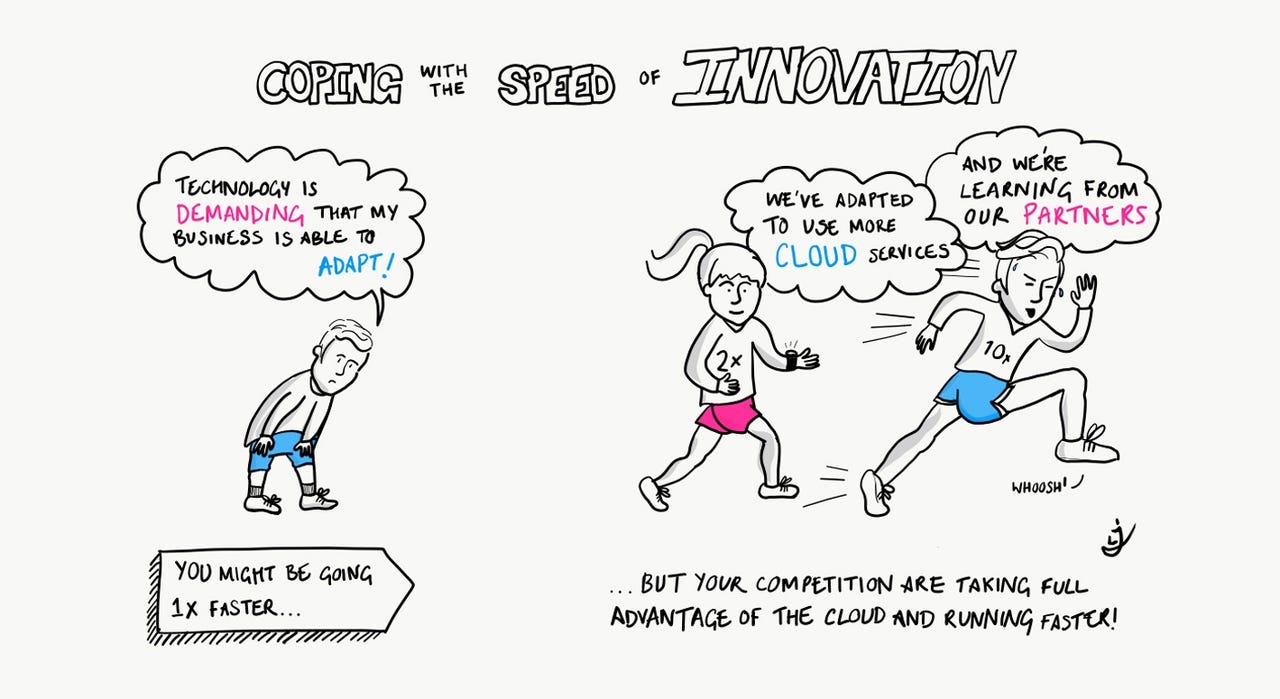Coping with the speed of innovation by investing in a diversity of technology and skills

Technology has never been more complex, nor competitive. But it's also not going to plateau here - it's only going to become more complex moving forwards, and organisations that want to be competitive need to become much more dynamic and innovative themselves in order to capitalise on the opportunities that this presents.
I recently spoke to Matthew Merriel, an Infrastructure Consultant at Kloud Solutions, who is a real veteran in observing the movement of businesses to the cloud, having specialised in this area since 2013. "A few years ago, there was a real push by the vendor giants to provide complete 'one-stop shops' to their customers," Merriel said to me." The idea being that the customer would source all of their IT needs exclusively from one vendor, would train their IT teams to become experts in that vendor, and to then manage the technology as an internally held asset. It would be convenient, efficient, and 'clean'... and the end user would benefit from knowing that everything would work together out of the box."
This generally resulted in a lot of on-premise technology, perhaps complemented by cloud solutions, but always focused on the internal capabilities and resourcing of the organisation.
That mindset is changing, and fast. Organisations have realised that the expensive servers that they maintain in their cupboards are twice as big as they need to be, and by moving those resources to the more readily scalable cloud, they're streamlining costs and also, because cloud services are diversified, finding that they have access to far greater levels of innovation. One of the realities in investing in a single vendor is that while you might have best-of-breed technology in one area (whatever that vendor's specialty is), in other areas the technology is likelyto be eclipsed by what another vendor offers.
With technology increasingly moving to the cloud and complex applications ofbig data, machine learning and artificial intelligence becoming points of competitive differentiation for organisations, the weaknesses in the "single vendor" approach are becoming increasingly explicit.
And yet it's not necessarily easy for a customer to simply shift away from the single vendor approach, Merriel said to me. "Moving to a more on-demand model requires organisations to re-think their approach to IT. It's increasingly difficult for a single organisation to 'hold' all of the technology skills within the organisation to manage a suite of technology solutions being provided by different vendors. Instead, organisations need to strengthen their capabilities by accessing the skills and capabilities of integrators and partners."
The Telstra experience
Even at Telstra, for our scale and thousands-strong internal IT resources, we derive better results for both our business, and our customers, in developing ecosystems of partners that leverage the specialised skillsets of each other. In other words, Telstra's strategy is focused not only on its own capability scaling (organically through enablement and inorganically through acquisition) but also on scaling out an ecosystem of trusted partners that we can orchestrate to deliver end-to-end solutions and outcomes.
One of the trends that we're observing, and certainly looking to enable ourselves, is the changing attitudes towards the accessibility of IT resources. Businesses are becoming more comfortable with the idea of "on-demand" technology; the fluidity with which such technology can be accessed as needed, and the ability to apply those resources to specific projects, without needing to make permanent investments.
That trend can be seen to apply to capabilities and human resources, too. For most organisations moving to the cloud is just the start, it then becomes an ever-evolving journey from that point, and managing that ongoing journey requires that the business think about its IT resource management differently. Trying to remain across innovation within the cloud can be daunting. The technology is constantly in flux, products are constantly coming to market, and new ways of working with cloud are constantly being discovered. Training staff, and then keeping trained them across all that technology and innovation, is unmanageable even for large teams.
So the solution is to turn to partners. Traditionally, the systems integrator has been leveraged by an organisationthrough a technology transition to help with the initial move and getting the internal IT team up to speed with the deployment. That role persists; not only does it enable teams to get into the cloud quicker and simpler it allows staff to leverage and learn from people who work with the technology every day. But as Merriel said to me, there's also plenty of opportunities for systems integrators, such as Kloud, to go a step further and find significant value-adding services for their customers.
"Systems integrators are finding an ongoing role in being available for their customers to continue to provide expertise," Merriel said. "In the future this will transition to a 24/7 on-demand support model for the skills and human resources that the systems integrators can offer, much as the technology itself is made available to the technology."
Technology is demanding that businesses be able to adapt quickly, and shift their way of sourcing, and working with, technology. The longer it takes to modernise your use of technology, the greater the advantage your competitors will have over you - you might be going at 1X, but your competitors are taking full advantage of the capabilities that the cloud offers and they'll be running at 2X, or even 10X your speed. This challenge will become overwhelming for any individual company to handle in itself. The only solution is to look to an ever-broadening ecosystem of vendors and systems integrators, and then look to bring it all together in a meaningful and cohesive manner.